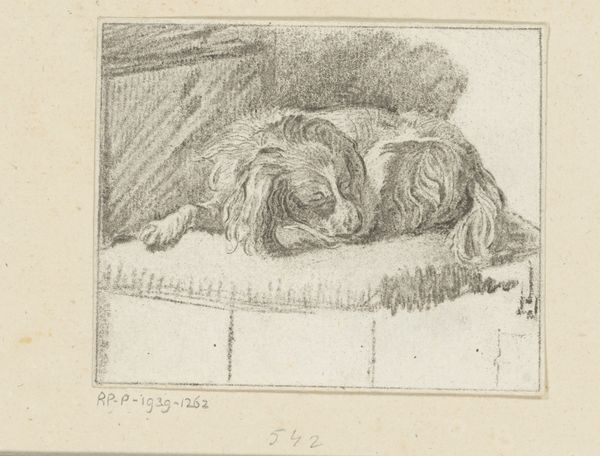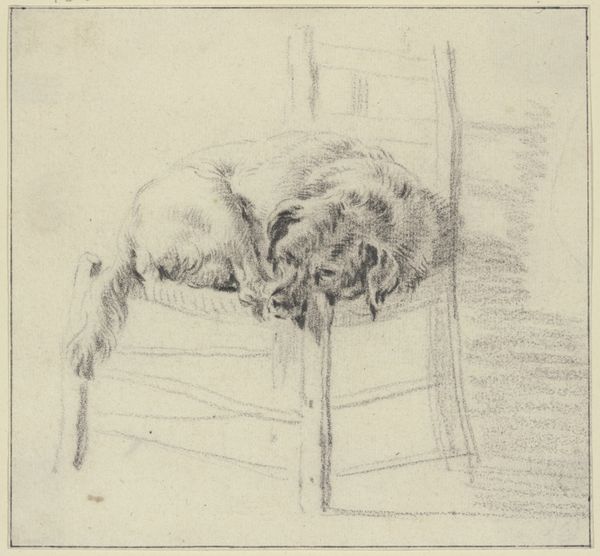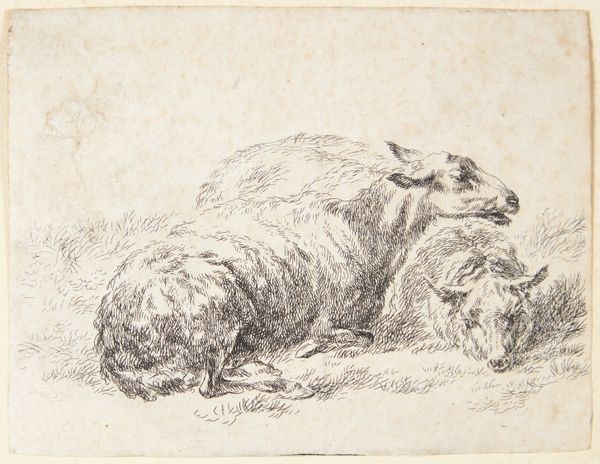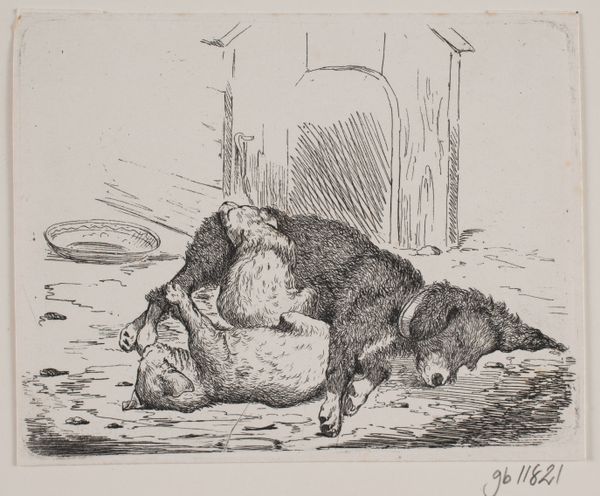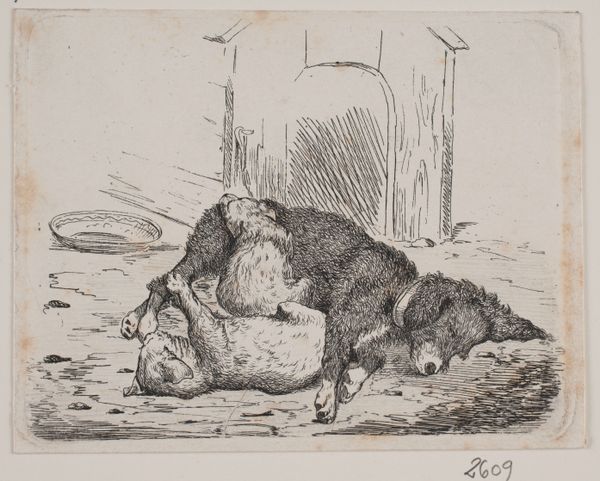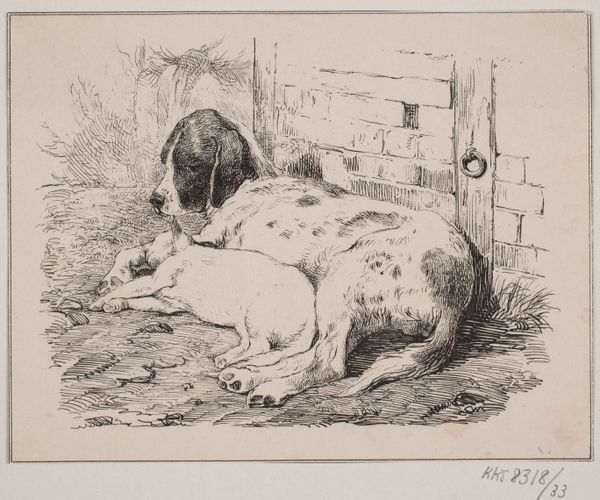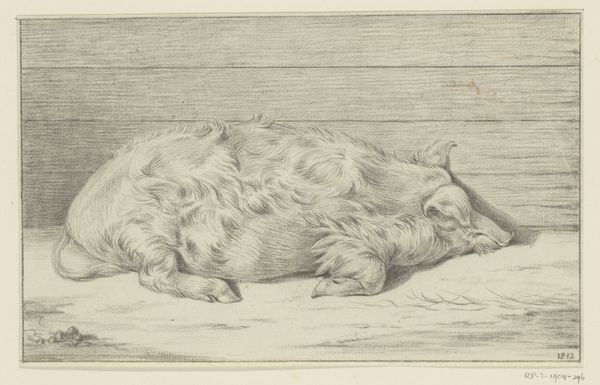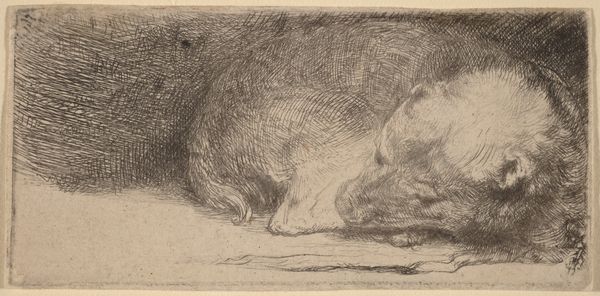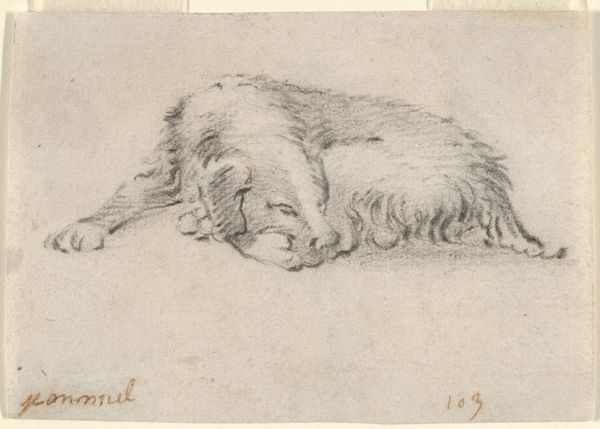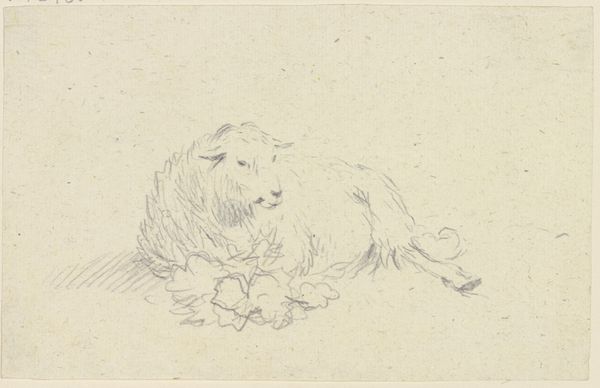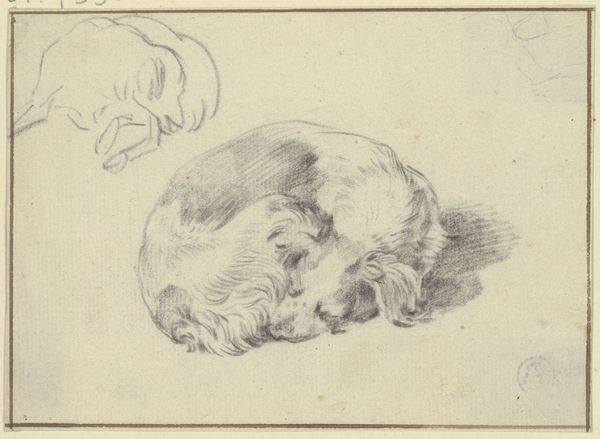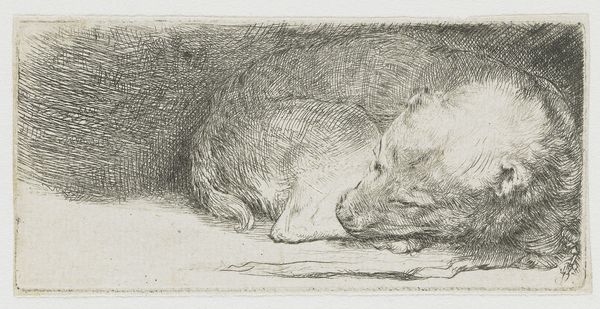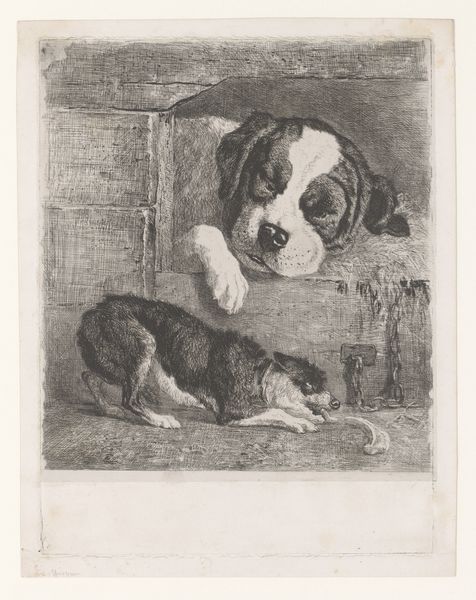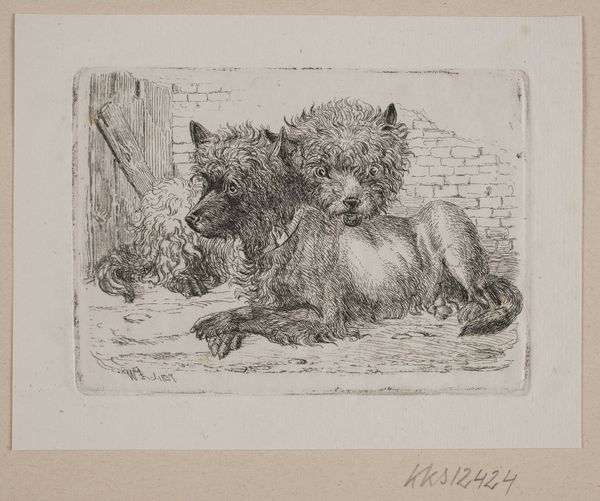
drawing, print, etching, engraving
#
drawing
#
animal
# print
#
etching
#
etching
#
engraving
#
realism
Dimensions: 70 mm (height) x 100 mm (width) (plademaal)
Curator: This is "En langhåret hund," or "A Long-Haired Dog," an etching by Johannes Wilhelm Zillen from 1846, currently held here at the SMK. Editor: There's a certain stillness to it. The way the dog is curled up against the rough wood makes it look rather dejected. Is it typical for the era? Curator: Such intimate depictions of animals were becoming more commonplace as the rising middle class sought representations of their domestic lives reflected in art. The Royal Copenhagen Porcelain factory had introduced animal figurines. The intimacy, the 'realism', as a style was rising, you know? Editor: I can see how this appeals to domesticity with the detailed textures—the individual strokes that give the dog's fur such volume and character, then stark, solid and still. It really creates such a palpable contrast. It seems like Zillen dedicated considerable effort to rendering texture, even within a limited tonal range. Curator: Right. Printmaking served to further popularize such imagery. The rise of print culture also helped democratize art, making it more accessible to the broader population. But remember, not all social classes could access such items, especially if finely framed. Editor: And do you think Zillen has imbued the dog with a deeper significance, or is it merely a representation of domestic tranquility? Curator: The latter, mainly. Artists like Zillen had strong relationships with the academic and artistic circles around the Danish Golden Age; Denmark was not a huge power then and this type of imagery reflects that focus on inner matters, rather than outward projection on a world stage. Editor: The subject definitely mirrors the social climate of its time, reflecting bourgeois sensibilities. Even a common pose conveys tranquility—perfectly in line with this style of living, but perhaps the animal serves as metaphor of a world-weariness or tiredness after too much tranquility. Curator: Possibly! These animal representations in bourgeois settings become vehicles to explore inner states. As always in this period, form and socio-political context reinforce each other. Editor: Thinking of the art object's ability to evoke certain sensations is key. Curator: Indeed, understanding both the intrinsic qualities of the print, and its circulation at the time gives us a window into 19th-century Copenhagen.
Comments
No comments
Be the first to comment and join the conversation on the ultimate creative platform.
